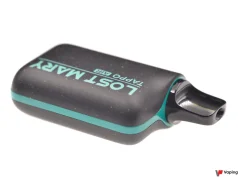
On March 15, 2016, a letter signed by Clive Bates and Gerry Stimson had been sent to the Slovenian Minister of Health, Milojka Kolar Celarc, exhorting her to adopt the minimal EU requirements to tobacco regulation and not to ban internet sales.
Since May 20, Slovenia, as all other European members of the EU, has implemented the Tobacco Product Directive. It’s interpretation that is in line with WHO recommendations, introduced strong regulation that will impede the development of electronic cigarettes or personal vaporizers and stifle innovation.
Taxation on e-liquids
Slovenia has also introduced a specific taxation of €0.18 per ml of e-liquid, which will increase unduly the price of liquids at a level that will make vaping much less competitive compared to smoking (the price for tobacco cigarettes is much less in Slovenia than in many other European countries).
The Slovene vapers’ association (ZVSLO) has convened a press conference last Tuesday with representatives from the Ministry of Health, of the vapour product trade association, and international experts of the field, Drs Konstantinos Farsalinos and Jacques Le Houezec.
President of @ZVSLO @S3tArtist (yeah, I know he's a BIG man :-D) with @JLHamzer and @FarsalinosK ! #EcigSLO #vaping pic.twitter.com/TK76r34UHy
— ZVS (@ZVSLO) June 8, 2016

In his presentation to the press, Konstantinos Farsalinos makes a state-of-the-art advocacy plea for personal vaporizers and against the way the EU is regulating it.
The cardiologist recalls that “tobacco products are the most harmful way for the intake of nicotine but also the most effective and pleasing one.”
And among the tobacco products, he doesn’t count the e-cigarette that he does not consider as tobacco product, sensu stricto, despite the will of the authorities to embed them in this category.
This effective way to get a nicotine fis is mainly the reason why it is so hard to kick the habit, but is it rather due to smoking than to the nicotine itself, as he will detail later.
In Europe, smoking prevalence has declined from 38% to 28% over the last 12 years, based on the Eurobarometer data, but smoking is still a major issue for public health. In Slovenia, where the researcher is doing his presentation, the trend is opposite, reaching up to 30% in 2013.
“People smoke for Nicotine but they die from tar”
Sweden was chosen to illustrate that nicotine is not the central issue since the country shows a tobacco use by 30% but a smoking prevalence of only 10%, the lowest in Europe and probably in the world.
Such a low prevalence is the result, according to the scientist, is tightly linked to the use of snus, a tobacco product whose consumption, unlike cigarettes, implies no combustion. And from a public health point of view, Sweden exhibits the lowest rate of death from lung cancer or heart diseases.
Lessons from the past
 By comparing snus and tobacco studies, researchers were able to discriminate between the effect of nicotine alone and the combination of nicotine with combustion products. Most of the studies show that the risk of snus-users to get lung cancers is close to that of never-smokers and 99% lower than with cigarettes. Studies also shows a similar trend for heart diseases.
By comparing snus and tobacco studies, researchers were able to discriminate between the effect of nicotine alone and the combination of nicotine with combustion products. Most of the studies show that the risk of snus-users to get lung cancers is close to that of never-smokers and 99% lower than with cigarettes. Studies also shows a similar trend for heart diseases.
The orator concludes in a real success of the Swedish tobacco harm-reduction strategy with the non combusted snus and quotes it “a major success”.
Similarly, electronic cigarettes or personal vaporizers, also have the potential to reach such success if they were allowed to, but at a much higher level, in Europe and probably worldwide.
“E-cigarette aerosol is also much less harmful than cigarette smoke“
The e-cigarette has several advantages in dosing nicotine, compared to traditional cigarettes:
- Lower carcinogenic exposure,
- Improvement of respiratory conditions, as demonstrated on asthmatic people,
- Improvement of blood pressure
The e-cigarette aerosol is also much less harmful than cigarette smoke, principally with regard to carcinogenic substances that are in much lower concentration. The researcher recall that zero-carcinogenic exposure is an utopia since those substances are present almost everywhere, from ambient air to food and drinks.
“E-cigarette emissions become well described“
 But in general, e-cigarette emissions become well described by scientific studies and it is an established fact that their levels are much lesser:
But in general, e-cigarette emissions become well described by scientific studies and it is an established fact that their levels are much lesser:
- Nitrosamines are up to 2,000 times lower than in combusted tobacco and the level of exposure to one cigarette would correspond to one or two years of vaping,
- Nitrate and phenols,
- Heavy metals (Cd, Cr, Co, Pb and Ni) are even lower than required by health agencies for medicinal inhalators,
- Aldehydes are also lower than the accepted upper safety limit for indoor air quality (WHO source). Formaldehyde, the most common aldehyde, is present in every indoor atmosphere, due to the chemical treatment of furnitures, carpets, floors, paintings…
What about e-cigarette use by non-smokers?
From the Eurobarometer, it comes that 35.1% somkers managed to quit smoking thanks to the e-cigarette and an extra 32.2% reduced their smoking. A total of 67.3% of EU smokers benefited in e-cigarette, so far.
The physician recalls that, historically, no other product has achieved comparable efficiency.
What about initiation to tobacco products with the e-cigarette?
Citing his analysis of the Eurobarometer data, Farsalinos also demonstrates that, in Europe, such initiation is not a matter of concern since it is largely a marginal use of the product.
Is the EU regulation adapted to the e-cigarette?
 To this question, Farsalinos is clear “most of the EU regulation is meaningless and restrictive” and he demonstrates his position through some examples:
To this question, Farsalinos is clear “most of the EU regulation is meaningless and restrictive” and he demonstrates his position through some examples:
- The volume of the tank limited to 2 ml obliges the user to refill more frequently, which increases its potential exposure to e-liquid.
- Maximum content of refill bottles limited to 10 ml: There is no other product on the market that is submitted to such requirement, even the most toxic solvents that one can find in 1L-bottles at the supermarket. The risk of intoxication by contact with a nicotine e-liquid is limited by the fact it takes several hours for the active compound to reach the blood circulation through this way. Only ingestion or injection of e-liquids presents a potential risk to health, the reason why labelling should be clear, stating to leave out of reach of kids.
- Leak-proof and non-fragile atomizers and bottles indirectly ban any glassware, the safes material to be used for such products with regard to chemical contamination.
- The ban on advertising and promoting limits the availability of information for smokers.
- Marketing and cross-border sales need to be regulated with specific rules but in any case should it be banned.
- Separate registration for every country is questionable in legal terms. It definitely increases the price of vaping products and creates discrepancies in the registration fees.
“Legislation is creating barriers in e-cigarette use“
For the researcher, legislation is creating barriers in e-cigarette use that indirectly or directly protect tobacco industry. And the reason is simply because the e-cigarette is a direct competitor to tobacco cigarettes.
- Current estimates (PHE, RCP) show e-cigarettes are at least 95% safer than tobacco cigarettes.
- Scientists have a good idea of what is present in e-cigarette aerosols and do adequate recommendation to limite exposure to the most harmful substances.
- No combustion, no tar.
- Minimal impact of nicotine on addiction without the smoke and despite, there is a strong opposition of some tobacco harm-reduction associations.
- No harm from second-hand exposure. Any decision to ban e-cigarette use in public places is scientifically unjustified.
- There are still concerns about the use of e-cigarettes by non-smoking adults, and this requires monitoring the situation, but it actually unsupported by figures.
- There is still no gateway effect to smoking with e-cigarettes.
He also denounces abuses of the precautionary principle that leads to reduce the access of product that should otherwise be promoted for their benefits and their relative harmless profile.
Finally, the cardiologist asks the audience to think twice and especially to remember what happened twenty to thirty years ago with in the context of HIV. The same harm-reduction arguments were used in programs against needle exchange and opioid substitution therapies. “It took time for the authorities and the general public to digest and accept such measures“.
In tobacco harm-reduction “one has to race against the clock”
The same applies to tobacco harm-reduction. One would need time to implement such measures but one has to race against the clock since millions of people are sentenced to death because of their smoking. It is up to authorities to speed up and find the right way to regulate the product, which is still not achieved.
The physician recalls that the role of health professionals in tobacco harm-reduction is not to judge and punish people for consuming nicotine in a harmful way but to help them adopt a better habit.












Ecigs could end the Tobacco Age world wide. Government opposition to this has turned me into a single issue voter. Vapers might swing the vote on whether the UK stays in the EU. I’m in the US. Any elected official who puts tobacco taxes over health needs to be put out of office.
Contains a lot of information’s, very cool! Thank you and vape on!
You can find the mentoined letter from Clive Bates and Gerry Stimson here: http://zv-slo.si/wp-content/uploads/2016/03/Slovenia-letter-on-e-cigarettes-Health.pdf
Awesome! Thanks